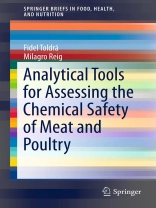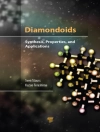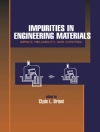The goal of the Brief is to summarize the state of the art on the chemical safety issues currently concerning meat and poultry, and to discuss the current international legislation on the tools available for their control. The Brief will review the analytical controls and instrumentation available for the control of residues of growth promoters, antibiotics, and any other environmental substances in raw meat and poultry. In addition, there will be a discussion of both the substances that may be generated as a consequence of processing, and the tools that are available for their control. These substances may be quite varied in nature; they may include, for example, the heterocyclic amines generated by heating, the nitrosamines sometimes present in cured meats with nitrite if not properly processed, the polycyclic aromatic hydrocarbons that can be generated depending on the type of smoking used, or the biogenic amines that can be generated during fermentation. Finally, the controls for the detection of foreign proteins (e.g., whey proteins) in the final products will be also compiled. The Brief will conclude with a view of future trends and key references for readers interested in learning more about this topic.
Table des matières
1 Introduction.- 2 Control tools to assure chemical safety of meat and poultry and its derived products.- 2.1 Control of raw meats and poultry.- 2.2 Controls during processing.- 2.3 Controls of the final products.- 3 Veterinary drugs.- 3.1 Causes of concern for the presence of veterinary drugs residues in meat and poultry.- 3.2 Growth promoters.- 3.3 Antimicrobial and antibiotic drugs.- 3.4 Other veterinary drugs.- 3.5 Control of residues of growth promoters and antibiotics in meat and poultry.- 3.6 Analytical methodologies for detection of veterinary drugs.- 3.6.1. Sample preparation.- 3.6.2. Screening techniques.- 3.6.3. Confirmatory methods.- 4 Carcass disinfectants.- 5 Residues of environmental contaminants (dioxins, pesticides, heavy metals).- 6 Substances generated during the processing of meat and poultry.- 6.1 N-nitrosamines.- 6.2 Heterocyclic amines.- 6.3 Polycyclic aromatic hydrocarbons.- 6.4 Biogenic amines in fermented meats and poultry.- 6.5 Lipid oxidation.- 6.6 Protein oxidation.- 6.7 Irradiation-derived compounds.- 7 References.












